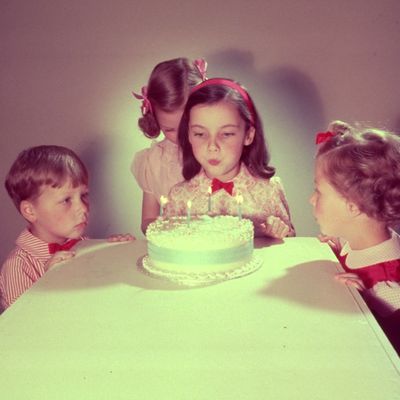
I hate to insult you because I consider us friends, but I’m worried you might not know how to blow out a candle. (A scented candle, to be specific.) Don’t worry, not knowing the proper way to blow out a scented candle is nothing to be embarrassed about. I’m here to help.
Some (candle snobs, not to be rude) will tell you the question “how do I blow out a scented candle?” is a trick. Unlike birthday candles, tapers, any manner of vessel-less candles, or candles whose purpose is lighting rather than scent, scented candles have all sorts of rules to protect their jars, their wax, and their fragrance. They (the candle snobs) will tell you that, in fact, you should not blow out a scented candle at all. Instead they’ll tell you to do one of three things:
1. Use a wick dipper to bend the wick into the wax. This method is used to extinguish the flame without any smoke — candle enthusiasts tend to dislike smoke because it disrupts the lingering candle scent and because it can, it’s true, coat the inside of your candle vessel with soot. Plus, they’ll say, coating the wick in wax will make it easier to relight.
2. Use a snuffer, a little bell-shaped thing on a little stick, to snuff out the flame. This, they’ll tell you, protects the wax from being blown astray by your wild, eager breath.
3. Use the lid, if the candle came with a non-flammable lid, to suffocate the flame. This method seems very dangerous to me, please do not try it.
In my opinion, you can just blow out the candle. It’s fine. Try not to blow it out like “The Three Little Pigs” wolf, be delicate, but I don’t particularly think you need to buy an extra tool to put out a scented candle. You were born with a fine enough scented-candle-extinguishing tool: your breath.
However, there is one thing I must beg you to do when blowing out a candle. I’ll bold it so you remember it better: Wait until the entire surface of the candle has melted before blowing out the candle. Okay? Will you remember? This takes time, but it is necessary. Please trust me; I have never lied to you even once that you know of.
A friend recently asked me:
I want to light a candle, but I’m going to go to bed soon. Is it worth lighting it for a few minutes and then blowing it out?
NO. Excuse me, I had my caps lock on by mistake. No. When you blow out a candle before the entire surface has melted, what will happen is that, from that point on, the candle will remember where it stopped melting and will only melt to that point, leaving a coating of unusable wax along the inside of the vessel. This is called tunneling. It’s called tunneling because it looks like a little tunnel has been bored into your candle by your impatience or poor planning. It’s sad. Please do not make your little friend, the candle, sad.
You might think, “I spent a lot of money on this scented candle. I don’t want to burn it for very long periods of time, I want to savor it. And getting the whole surface to melt takes, like, an hour!” I know, I’m sorry. I do understand. But once your candle begins to tunnel, it is very difficult to get it back into shape. (There are some methods on YouTube that I’ve tried, but never completely successfully.) And if your candle is tunneling, the wax along the sides is rendered an unusable waste. Plus, because your candle is burning along a smaller circumference, the candle’s throw (how far its fragrance is cast) decreases. It’s a bigger waste of money than just enjoying it. And, anyway, you deserve to burn your candle for an hour.
You have to spend money to make money, baby, and in this case that means burning your scented candle until the entire surface has melted.
Live a little!





